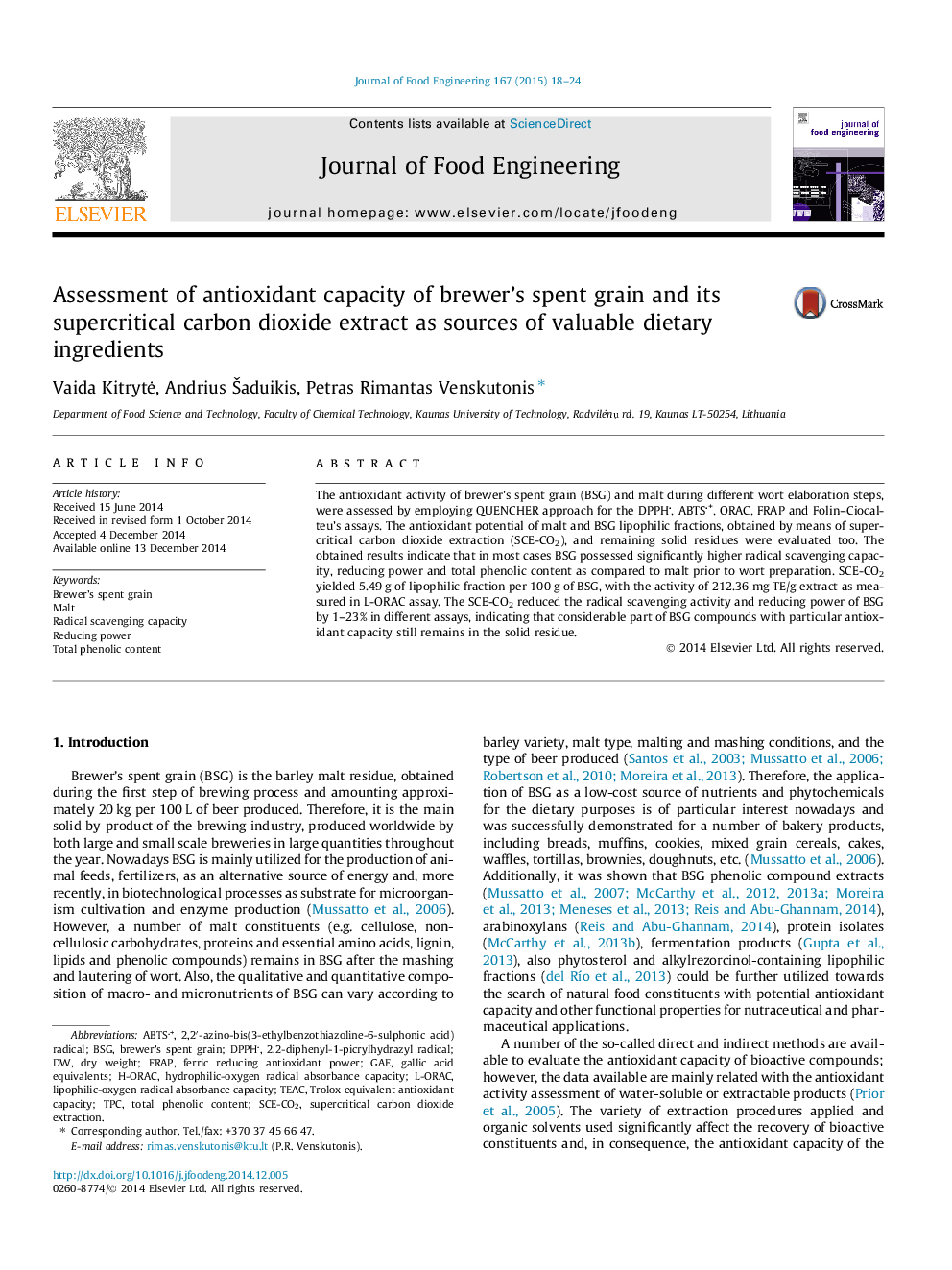| Article ID | Journal | Published Year | Pages | File Type |
|---|---|---|---|---|
| 222867 | Journal of Food Engineering | 2015 | 7 Pages |
•Brewer’s spent grain (BSG) is the main beer production by-product.•In vitro antioxidant activity of BSG and malt was comprehensively evaluated.•In general, BSG showed higher total antioxidant capacity as compared to malt.•Lipophilic fractions were isolated by supercritical fluid extraction (SCE-CO2).•Considerable amount of antioxidants remained in the solid residues after SCE-CO2.
The antioxidant activity of brewer’s spent grain (BSG) and malt during different wort elaboration steps, were assessed by employing QUENCHER approach for the DPPH, ABTS+, ORAC, FRAP and Folin–Ciocalteu’s assays. The antioxidant potential of malt and BSG lipophilic fractions, obtained by means of supercritical carbon dioxide extraction (SCE-CO2), and remaining solid residues were evaluated too. The obtained results indicate that in most cases BSG possessed significantly higher radical scavenging capacity, reducing power and total phenolic content as compared to malt prior to wort preparation. SCE-CO2 yielded 5.49 g of lipophilic fraction per 100 g of BSG, with the activity of 212.36 mg TE/g extract as measured in L-ORAC assay. The SCE-CO2 reduced the radical scavenging activity and reducing power of BSG by 1–23% in different assays, indicating that considerable part of BSG compounds with particular antioxidant capacity still remains in the solid residue.
